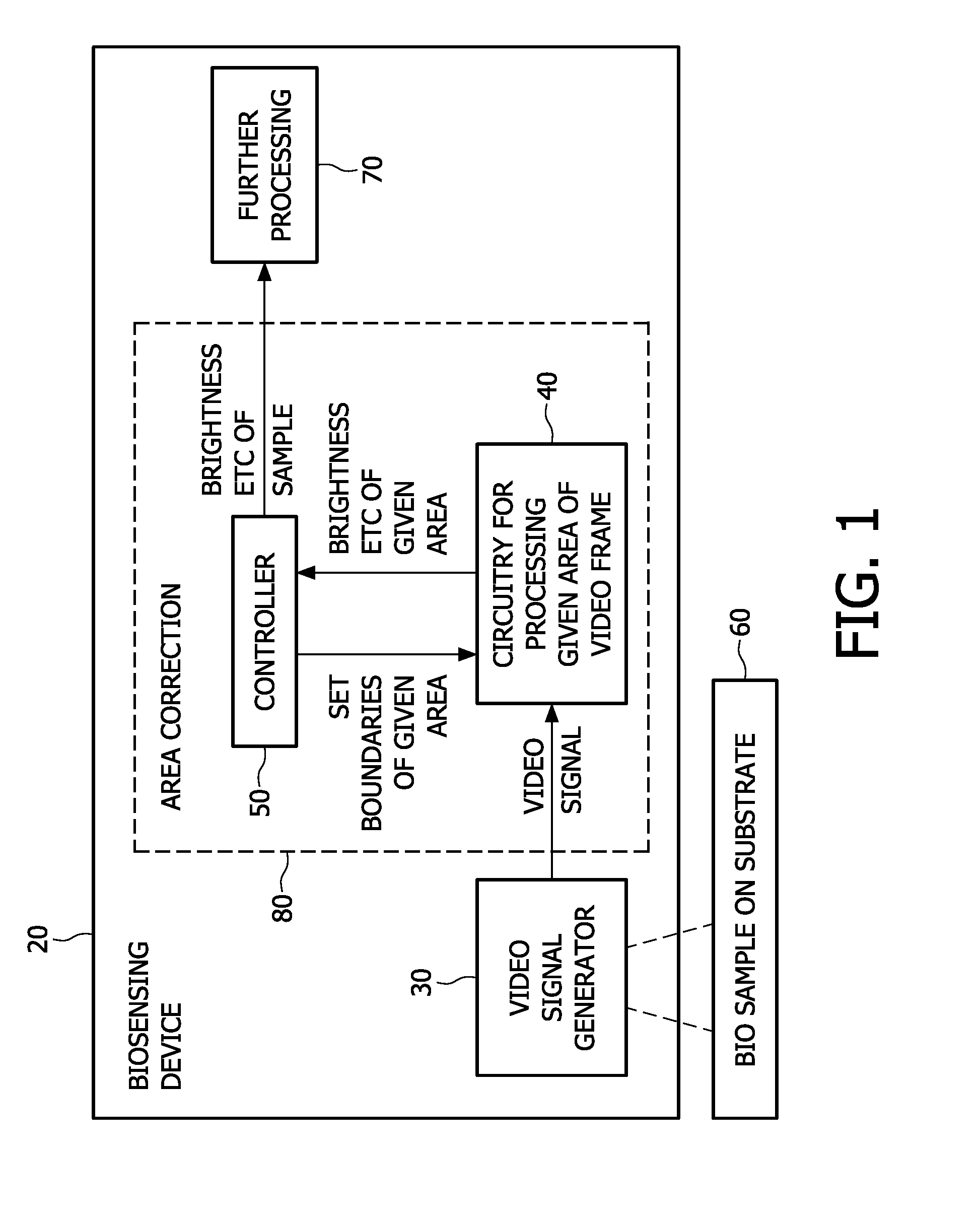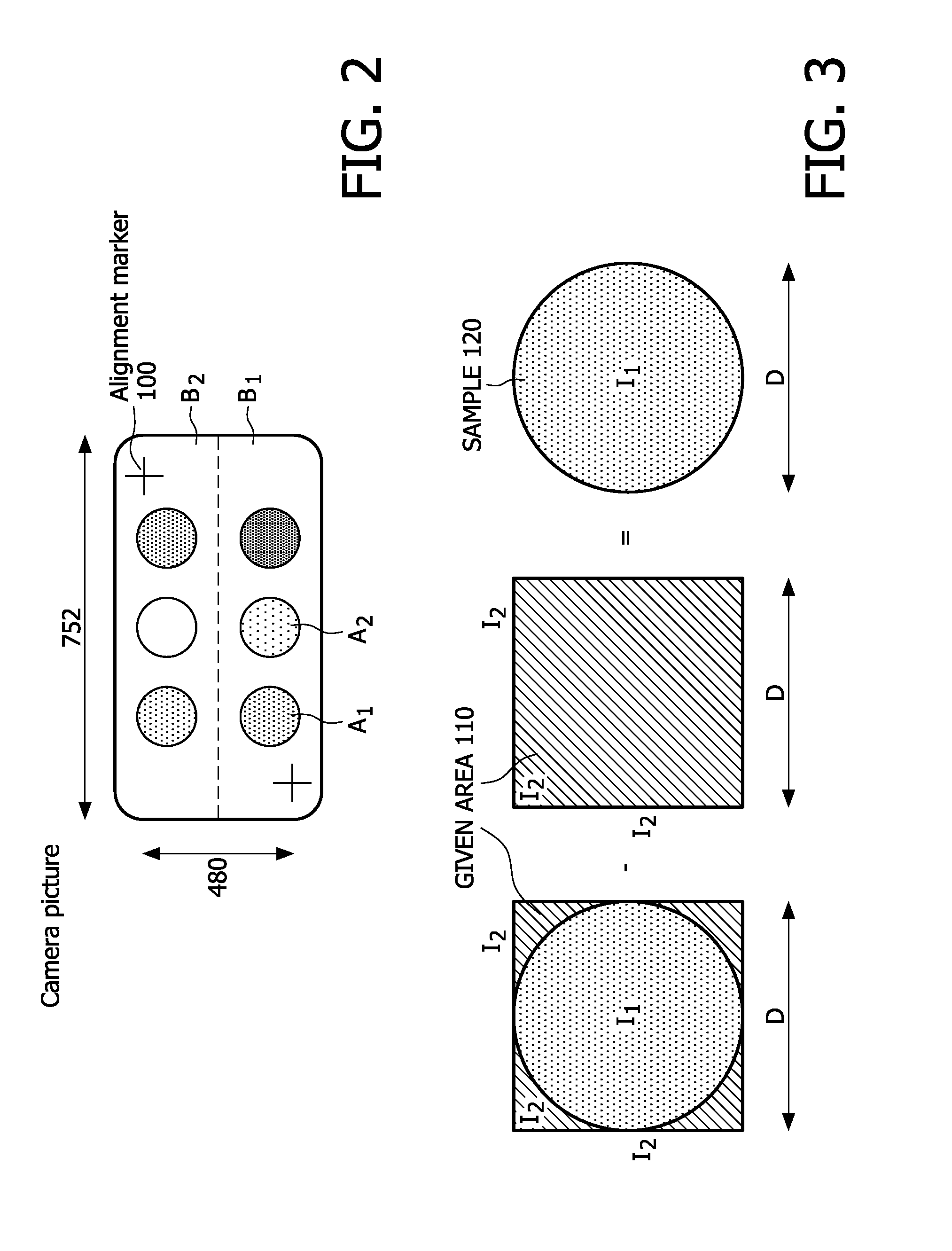Correction of spot area in measuring brightness of sample in biosensing device
a biosensing device and spot correction technology, applied in the field of biosensing devices, can solve the problems of only being operated by trained personnel, large and expensive instruments, and inability to transfer cell analysis to micro-fabricated systems, etc., and achieves the effect of not being suitable for roadside use or other instant tests
- Summary
- Abstract
- Description
- Claims
- Application Information
AI Technical Summary
Benefits of technology
Problems solved by technology
Method used
Image
Examples
first embodiment
FIG. 1, a Biosensing Device
[0049]A first embodiment of the present invention is shown in FIG. 1. This shows a schematic view of a biosensing device 20 having a video signal generator 30 arranged to image a biosample 60 on a substrate. The video signal generator may be part of the biosensing device or it may be a separate apparatus for use with the biosensing device 20. The substrate can optionally be incorporated within the biosensing device, or be a separate cartridge or swab or any container for example.
[0050]An area correction part 80 of the device takes the video signal and has circuitry 40 for processing a given first area of each frame of video. For some applications a time sequence of brightness values is needed in order to interpret an assay event such as a chemical binding process correctly for example. In one embodiment, at least 10 frames per second should be processed, e.g. from a 752H×480V (CCD / CMOS) video camera. The circuitry outputs a brightness value of a given firs...
embodiment 1
FIG. 3 Correction for Binding-Spot Shape
[0073]To reduce hardware complexity and power consumption, the assay locations, e.g. binding spots are measured by a suitable method, e.g. finding the brightness of a polygonal, e.g. rectangular given first area 110 (intensity I2) centred on the assay location, e.g. the spot (intensity I1) as shown in FIG. 3. As the assay locations, e.g. binding-spots are usually not rectangular, the measured light power of the rectangular first area does not reflect the correct information.
[0074]FIG. 3 shows a circular assay location, e.g. binding spot (dark shaded, intensity I1) from which the intensity is measured by measuring a polygonal e.g. rectangular given first area (diagonal shaded, intensity I2). As shown diagrammatically, in FIG. 3, the brightness of the assay location, e.g. spot in terms of the average light intensity can be found by subtracting the measurement of the same first area without the assay location, e.g. spot, from the measurement of ...
PUM
 Login to View More
Login to View More Abstract
Description
Claims
Application Information
 Login to View More
Login to View More - R&D
- Intellectual Property
- Life Sciences
- Materials
- Tech Scout
- Unparalleled Data Quality
- Higher Quality Content
- 60% Fewer Hallucinations
Browse by: Latest US Patents, China's latest patents, Technical Efficacy Thesaurus, Application Domain, Technology Topic, Popular Technical Reports.
© 2025 PatSnap. All rights reserved.Legal|Privacy policy|Modern Slavery Act Transparency Statement|Sitemap|About US| Contact US: help@patsnap.com



